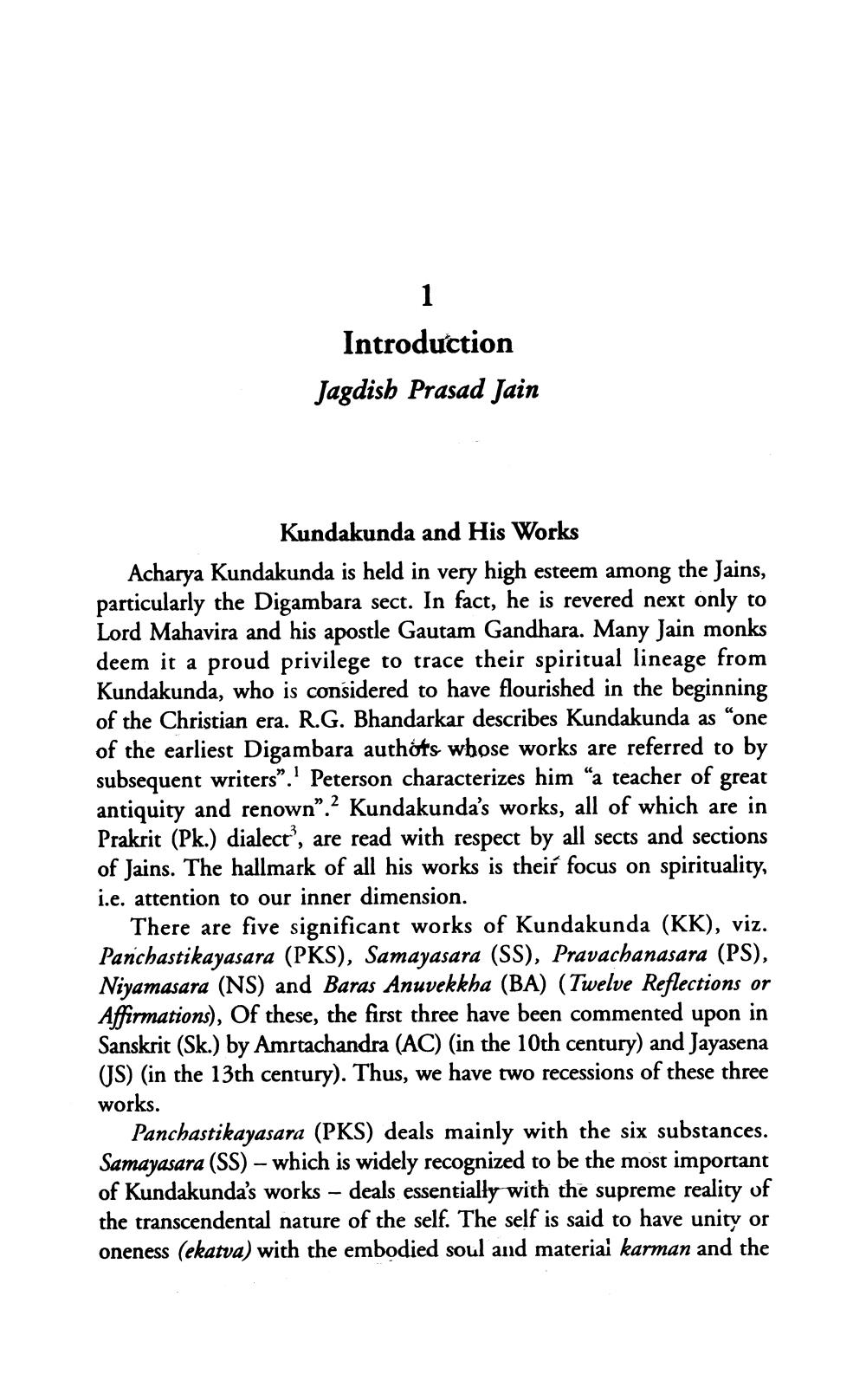________________
Introduction Jagdish Prasad Jain
Kundakunda and His Works Acharya Kundakunda is held in very high esteem among the Jains, particularly the Digambara sect. In fact, he is revered next only to Lord Mahavira and his apostle Gautam Gandhara. Many Jain monks deem it a proud privilege to trace their spiritual lineage from Kundakunda, who is considered to have flourished in the beginning of the Christian era. R.G. Bhandarkar describes Kundakunda as “one of the earliest Digambara authóts whose works are referred to by subsequent writers”. Peterson characterizes him a teacher of great antiquity and renown”.2 Kundakunda's works, all of which are in Prakrit (Pk.) dialect, are read with respect by all sects and sections of Jains. The hallmark of all his works is their focus on spirituality, i.e. attention to our inner dimension.
There are five significant works of Kundakunda (KK), viz. Panchastikayasara (PKS), Samayasara (SS), Pravachanasara (PS), Niyamasara (NS) and Baras Anuvekkha (BA) (Twelve Reflections or Affirmations), Of these, the first three have been commented upon in Sanskrit (Sk.) by Amrtachandra (AC) in the 10th century) and Jayasena (JS) (in the 13th century). Thus, we have two recessions of these three works.
Panchastikayasara (PKS) deals mainly with the six substances. Samayasara (SS) - which is widely recognized to be the most important of Kundakunda's works – deals essentially with the supreme reality of the transcendental nature of the self. The self is said to have unity or oneness (ekatva) with the embodied soul and materiai karman and the




